Google Drive is popular. From small businesses to large enterprises, the Google Workspace has its list of loyal followers—thanks to its simple yet effective suite of tools. As a key component of this tool-set, Google Drive focuses on addressing companies' storage and collaboration needs. But can its scope of use cover the extensive requirements of every business-specific function? The simple answer is no.
Why move away from Google Drive (yes, there are valid reasons)
Built to store, but not to manage
Google Drive is a cloud storage. That means it supports files of different formats to be stored within its cloud. But when the number of files and(or) the number of collaborators increase, using Google Drive poses some serious drawbacks.
For example, if you work for an automotive company where storing hundreds of car photos on Google Drive is the normal case. Organizing these images with just files and folders can get messy and finding a specific model, color, or angle without a sophisticated organizing system is tough. This is where custom metadata becomes crucial, letting you add detailed tags like make, model, year, color, or any other data or your choice. It makes searching for specific images quick and easy. Without it, you might end up sifting through countless folders, risking misplaced or accidentally deleted files. Plus, if you collaborate with large teams with everyone accessing the same folder, the chances of errors skyrocket. Someone might overwrite a high-resolution image with a low-quality one or delete a crucial photo needed for a marketing campaign, causing major setbacks.
So, using Google Drive to store and manage visual content isn’t the best option.
Related Read: Why Google Drive can’t be used as a Digital Asset Management Tool
Storage and per-day upload limits
For personal use, Google Drive's complimentary storage limit of 15GB across Gmail, Google Photos, and Google Drive would be sufficient. However, if you're managing a business with substantial data demands, this free tier might not cut it. Moreover, Google's upload restriction of 750GB per day per account could pose hurdles if you’re an organization dealing with large data volumes, like film production houses or design agencies.
In terms of paid options, Google Drive, presents various storage solutions, in notable increments. Unfortunately, you can't upgrade from 15GB to 20GB. Instead, you'll need to choose between 100GB for $1.99 per month, 200GB for $2.99 per month, and 2TB for $9.99 per month. If your needs exceed these boundaries, Google offers higher-tier plans of 10TB, 20TB, and 30TB.
These substantial leaps in storage plans can pose challenges for if you’re dealing with fluctuating data needs; in this case you’ll need your solution to be more flexible.
Branding limitations
Google Drive allows you to integrate your branding within its platform (as an extension of its brand). It allows for basic customizations like adding your company logo, colors, and custom URLs through the Admin Console, but if you want to completely white-label the platform to make it your own, Google doesn’t allow it.
Serious security concerns
Google Drive operates on "shared fate" where security is a shared responsibility between Google, customer admins, and end users. This means, a significant portion of the responsibility of securing your assets lies on you.
There are also risks associated with sharing of files. A mistake on your part with the default settings, allowing anyone with the link to view can publicly expose your business' crucial information.
There’s more.
In cases where you use third-party apps to integrate with Google Drive(using APIs), your insight over their security practices is limited. This can result in you unconsciously exposing yourself to hackers who exploit these compromised APIs.
Another way Google compounds to your security risks is that it scans all your uploaded files. While this is touted as a security measure to detect malware and other threats, it also means Google has access to everything you upload.
Can’t host files and optimize content
Google Drive does not provide a direct way to deliver files to the web. If you want to use files stored in Google Drive on a website, you need to host them elsewhere, such as on a web server or a content delivery network (CDN). Moreover, Google Drive lacks built-in optimization and transformation capabilities for the files stored within it.
For example, if you have an image file that needs to be resized or compressed for faster loading times on a website, you would need to use a separate solution like ImageKit which does media delivery along with digital asset management to perform these optimizations.
11 Google Drive alternatives for business-specific functions
If you’re a growing or an already established businesses, your operational needs can vary greatly based on your business type, your growth stage, and the unique challenges you face. So relying solely on Drive to meet all your needs might not be sufficient. Let's delve into some typical functionalities where supplementary solutions may be necessary alongside Drive.
Here’s a quick table before you read through the detailed alternatives.
| Use-Case | Best Option | Why It's the Best Option |
|---|---|---|
| Storing, managing, and delivering digital assets | ImageKit | Superior asset organization with AI tagging and Custom metadata. AI-powered search and Autocomplete to retrieve assets easily. |
| Document management | OneDrive for Microsoft ecosystem integration; Dropbox for fast syncing | OneDrive: Seamless integration with Office applications and Teams for collaboration; Dropbox: Lightning-fast file syncing capabilities. |
| Communication and collaboration | Slack | Extensive integration capabilities and excellent user experience for remote and mobile teams. |
| Backup and disaster recovery | Backblaze | Reasonably priced with unlimited online backup and easy-to-use interface for individuals and small organizations. |
| Project management | Asana | Comprehensive project management features with task assignment, due dates, dependencies, and progress tracking across projects. |
| Training and onboarding | Talent LMS | Course creation tools for building interactive content, assessments, learning paths, certifications, and tracking team progress. |
| Creative content creation | Adobe Creative Cloud | Comprehensive suite of professional design, video editing, and photography software with advanced capabilities. |
| Sales process management | Salesforce Sales Cloud | Enterprise-level CRM platform with workflow automation, sales campaign automation, and extensive marketing automation features. |
| Survey creation and distribution | SurveyMonkey | Advanced survey features including complex analytics, A/B testing, branching logic, and support for 55 languages. |
| Legal document management | NetDocuments | Tailored structure for organizing legal files seamlessly and robust security and compliance features required by the legal industry. |
ImageKit for storing, managing and delivering your digital assets
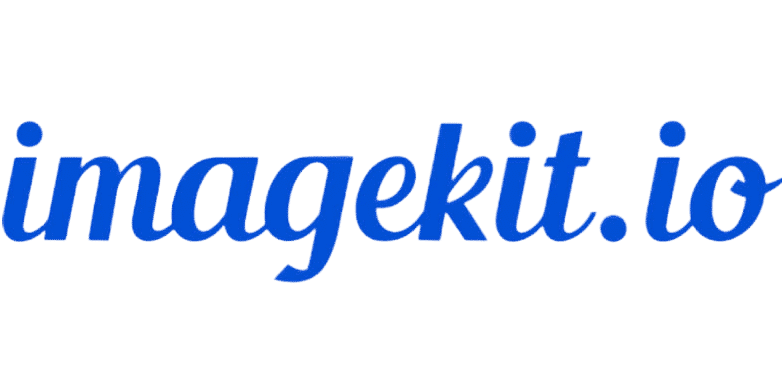
Running a business online is the norm now and so is the reliance on visual content. But managing all your marketing and sales visual collateral with Drive can be painstakingly difficult. And when this content is produced in scale - the challenges mount.
Asset organization is superior and file searches are powerful using DAM
Although Google Drive is adept at storing assets of various formats, it falls short in its organizing abilities. With a digital asset management system like ImageKit, you move past Google Drive’s basic file/folder organization to a more custom-metadata enriched asset organization within your files and folders. AI tagging further helps with categorization and to automate the classification of assets. Google Drive might have similar AI tagging abilities but it’s impossible to create complex search queries with Drive to pick out specific assets.
With ImageKit you can do this, EASILY.
Suppose you want to find all JPG images of the interior of a 2024 Model Y car. Just start typing the file name, for example, "Car_Interior….." ImageKit Autocompleter will offer relevant content suggestions based on your incomplete query, making the search faster.
Otherwise, you could combine multiple parameters to create a query and find the exact files. In this case, the query would combine the file type (JPG), the category (interior shots), and the specifics of the car (model, brand, and year). In seconds, you'll be able to retrieve all relevant images that match these criteria.
The below gif illustrates query creation with another example:
For more details, watch our video on how to use custom metadata to organize your media assets better.
While detailed organization & advanced filters help you find exact files using file attributes, ImageKit doesn't stop there. For instances when you can't remember file attributes like names or tags, ImageKit's AI-powered search saves the day.
Semantic search understands your text query to find assets that match the description. You can also use image-based AI searches to find visually similar assets in your DAM.
For example, a search for "boy in sneakers" will deliver all images with relevant visual content.

Collaboration is easier and secure
Imagine you're managing a project with sensitive digital assets. With Google Drive, you're limited to three broad access levels: viewer, commentator, and editor. However, what if you need more nuanced control? Here's where Google Drive falls short. For instance, you may want someone to be able to download files but not edit them or view only certain folders. Google Drive's rigid access levels can't accommodate these needs.
Now, let's talk about sharing with individuals versus teams. Say you want to share a sensitive document with a specific person outside your organization. With ImageKit, you can generate a password-protected, expirable link, ensuring that only the intended recipient can access it. It’s like the improved version of “share with anyone with a link” in Drive with password protection and expiry.
On the other hand, if you're collaborating with a team internally or externally, you can grant them access to designated folders or assets with tailored permissions.
Sharing assets with groups rather than individuals is a huge benefit. If someone joins or leaves the team, you’ll just have to manage the group, not individual permissions.With this flexibility, you collaborate seamlessly while safeguarding your assets from unauthorized access
💡 Read more on our user access management here.
Managing feedback becomes notably simpler with a DAM system. Timestamped or pinned comments can be directly associated with specific portions of the image or videos, enhancing precision and accuracy in the feedback process.
Efficient media delivery
ImageKit’s DAM is tailored for web use, allowing you to directly use file URLs on various platforms like websites, apps, and social media. Unlike Google Drive, ImageKit simplifies sharing assets with dev teams and others responsible for publishing URLs on websites or feeds for e-commerce or social media. This eliminates the need to host content elsewhere and streamlines the process for teams, making them more self-sufficient in managing and delivering media across different channels. Also, ImageKit automatically generates different versions of assets to fit various devices and screen sizes, saving time and effort for your tech team.
💡 Share our Image Transformations and Video Transformations documentation with your tech team to explore these capabilities.
One Drive and Dropbox for document management

If your business thrives within the Microsoft ecosystem, OneDrive is the clear winner. It seamlessly integrates with Office applications like Word, Excel, and PowerPoint; when paired with Microsoft Teams makes collaboration a breeze. Plus, with robust security features, OneDrive stands out for businesses with stringent data security requirements.
On the other hand, Dropbox boasts lightning-fast file syncing capabilities, making it the go-to choice for businesses that prioritize efficient sharing of large files. Its user-friendly interface makes navigating the platform a breeze, ensuring a seamless experience for users of all levels.
💡 Read our blog here for a more detailed comparison between Google Drive, Dropbox, and One Drive.
Slack for remote and mobile teams

While Google Drive's is more geared towards file storage and collaboration, Slack's channel-based messaging platform organizes work, conversations, and third-party applications in one accessible place. That means better collaboration and increased productivity for teams that operate remotely or are constantly on the move.
Sure, Microsoft Teams stands as a righful competitor focusing on Microsoft suite users. But, Slack’s extensive integration capabilities, and great UX take it up a notch higher. Comparing to Zoom, Slack fares better since it focuses on communication features beyond just video calls, making it more versatile.
Pricing: Slack offers a range of pricing plans, including Free, Pro at $8.75 per active user per month (billed monthly) or $7.25 per active user per month (billed annually), Business+ at $15 per active user per month (billed monthly) or $11.70 per active user per month (billed annually), and Enterprise Grid with pricing available upon request, tailored for different team sizes and requirements.
| Solution | Ideal use-case | Pricing |
|---|---|---|
| Microsoft Teams | Business using the Microsoft Office Suite | $4 per month per person |
| Zoom | Video communication | Zoom Business: $21.99 per user per month (minimum 10 users), includes meetings with up to 300 participants |
| Discord | Hosting online communities | Nitro Basic: $2.99 per user per month |
Backblaze for backup and disaster recovery
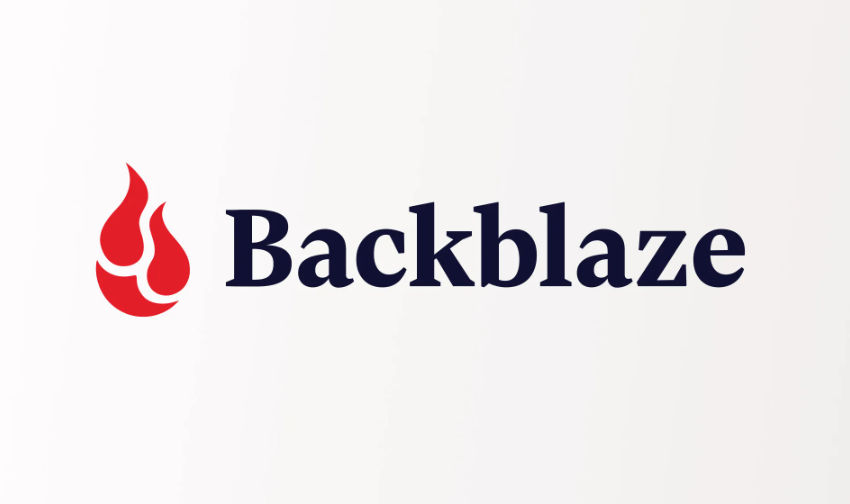
Google Drive might be a cloud storage service, but it doesn’t function as a full-fledged backup. Google Drive focuses on synchronization --- meaning when you make changes on your local device, those changes are automatically reflected in the cloud. But accidentally deleting a file from your local devices deletes the file from the Cloud or, in the worst case, losing access to your Google account for whatever reason permanently bans you from accessing your files.
Backblaze is a cloud backup service that creates a separate copy of your data in the cloud, independent of your local storage. It focuses on preserving historical versions of your files and protecting against data loss, making it a better option for backup and disaster recovery compared to Google Drive.
Along with Backblaze, find details on the best alternatives in the table below:
| Solution | Ideal use-case | Pricing |
|---|---|---|
| Microsoft Teams | Business using the Microsoft Office Suite | $4 per month per person |
| Zoom | Video communication | Zoom Business: $21.99 per user per month (minimum 10 users), includes meetings with up to 300 participants |
| Discord | Hosting online communities | Nitro Basic: $2.99 per user per month |
Asana to manage your projects across different business verticals
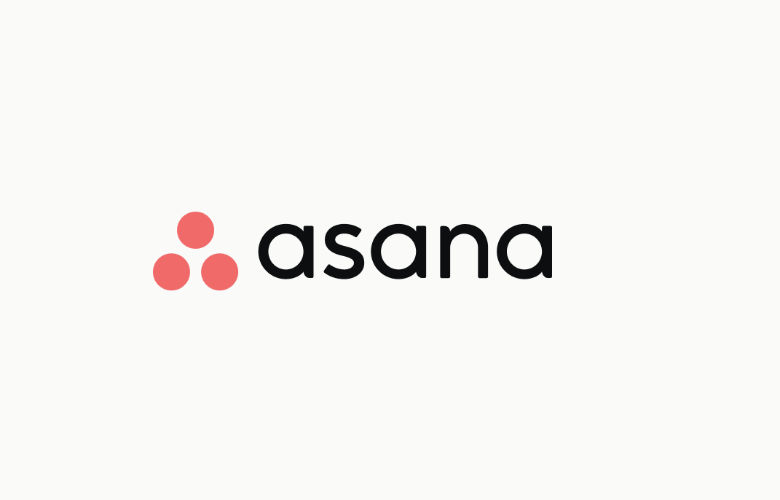
Collaboration over textual files via the Google Suite might be useful, but Google Drive is not built for project management. On the other hand, project management tools like Asana have features built for task assignment, due dates, dependencies, and progress tracking across projects. The tool allows you to break down projects into tasks and subtasks, visualize workflows, and keep individual projects separate – all necessary when you have individuals and teams collaborating over multiple projects. Moreover, Asana has a visually pleasing interface that makes it a joy to use.
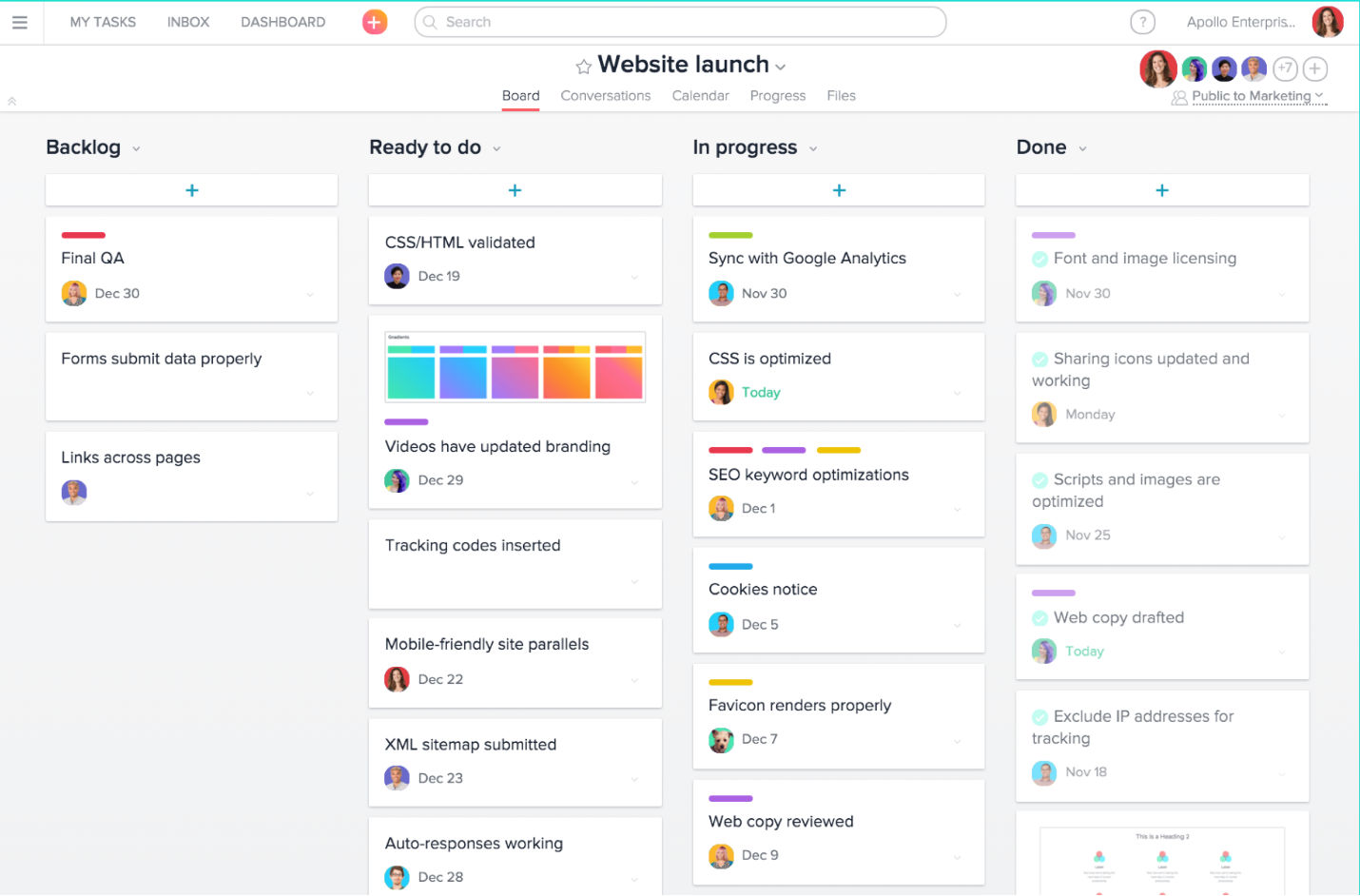
Other notable contenders include Trello - best for simple, cost-effective task organization, while Monday.com excels for advanced project management with robust security and support, ideal for large teams.
Pricing:
Asana: Asana offers a range of pricing plans. The Starter plan costs $10.99 per user per month, the Advanced plan is $24.99 per user per month, and the Enterprise and Enterprise+ plans require contacting Asana for a custom quote
Monday.com : The Basic plan costs $9 per user per month, the Standard plan is $12 per user per month, the Pro plan is $19 per user per month, and there is also a customizable Enterprise plan.
Trello: The Standard plan is $5 per user per month, the Premium plan is $10 per user per month, and the Enterprise plan is $17.50 per user per month based on 50 users.
Talent LMS to train and onboard teams
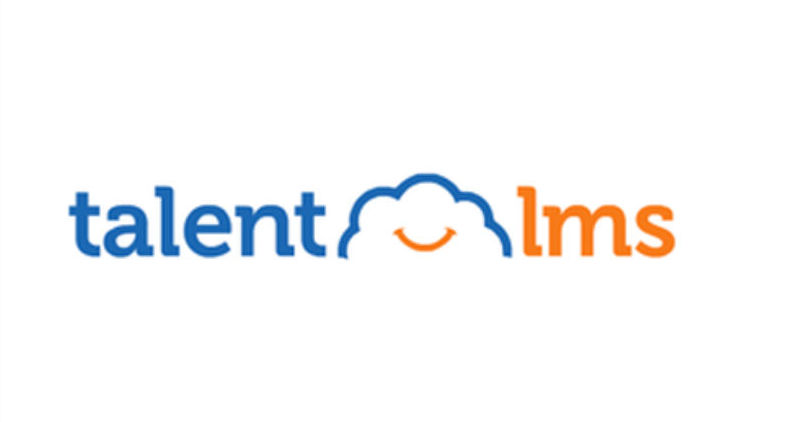
Google Drive lacks specialized functionalities essential for managing training programs. Unlike Learning Management System (LMS) tools like Talent LMS, which have course creation tools to build online courses of various media types, with Google Drive, you’ll need to use supplementary tools to create interactive content. For instance, to produce a training video for your product, you'd have to record yourself in a Google meeting and share it with teams. And, note: the transcription would be a separate entity from the video which downplays the entire learning experience.
Also, functionalities like conducting assessments, creating learning paths, providing certifications, and tracking the team’s progress on the training module require an LMS.
Below you’ll find a brief comparison between two sought-after LMS tools within the market.
| Aspect | TalentLMS | Moodle |
|---|---|---|
| User Satisfaction | 95% | 77% |
| Starting Price | $ 69 /month | Open Source, so free |
| Deployment | Mobile Application, SaaS / Cloud | Mobile Application, Self-Hosted, Cloud-based |
| Support | Business Hours, Email, FAQ, Knowledge Base, Online Community | FAQ, Knowledge Base, Online Community |
Adobe Creative Cloud for Creative Content Creation
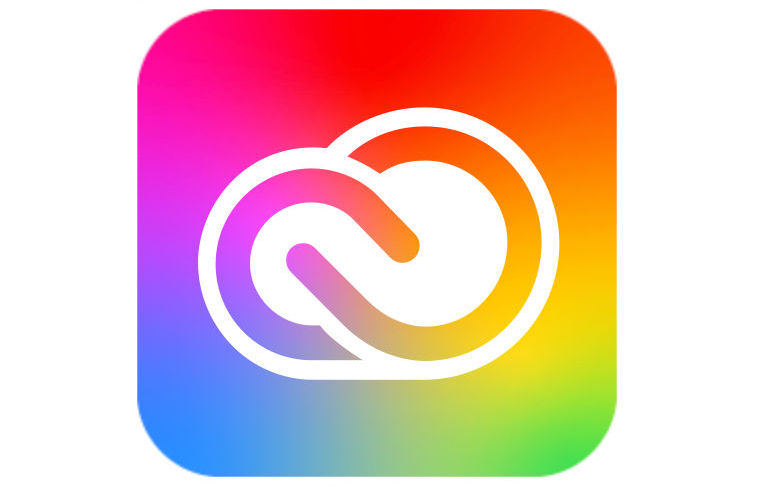
Google Drive itself can't support content creation. It works in cohesion with other tools, like GDocs, for example, in the Google suite for document creation and management. But marketing and creative content isn't only textual; it encompasses a diverse range of media types, such as images, graphics, videos, animations, and more. And so comes the need for a solution to create this variety of content.
Adobe Creative Cloud is a great option since it encompasses a comprehensive suite of professional design, video editing, and photography software to help you create intricate and visually appealing content.
It has advanced design capabilities - Powerful tools like Photoshop, Illustrator, and InDesign, offer extensive features for graphic design, illustration, and layout creation.
It has industry standard video editing tools Adobe Premiere Pro and After Effects in Creative Cloud help in professional video production.
It has advanced image editing capabilities: Adobe Lightroom and Photoshop allow professional photo editing, retouching, and image enhancement.
Now, if your teams use the Google Workspace and Drive to collaborate over files, integration won’t be a problem. With the Adobe Asset Link plugin in Google Drive this can be done.
But you’ll still need to deliver these assets over the web, and you do that with ImageKit.
| Software | Pricing | Best Use-Case Scenario |
|---|---|---|
| Canva | $12.99/month (Pro), $30/month (Enterprise) | Ideal for non-designers and small businesses looking for a user-friendly, cloud-based graphic design platform with a wide range of templates and collaboration features. |
| Affinity Suite (now acquired by Canva but will still remain a standalone solution) | Affinity V2 universal license at $164.99 one-off payment. | Suitable for professional graphic designers, game developers, and illustrators seeking a powerful, affordable, and feature-rich alternative to Adobe Creative Cloud, with a focus on vector graphic content creation. |
| CorelDRAW Graphics Suite | Pricing through re-sellers available here. | Reasonably priced. Geared towards professionals in the manufacturing industry as it offers pro-level features for vector drawing and editing. |
Salesforce Sales Cloud to streamline sales processes
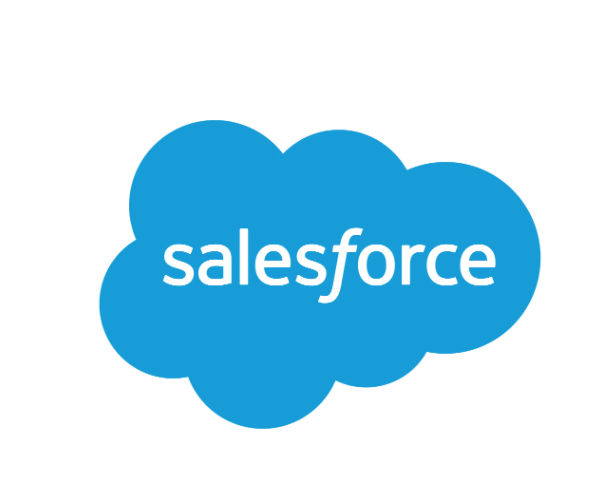
Tracking the sales function is very crucial for any business. And if you’re an emerging business using the Google workspace, you might think that tracking the sales function over Sheets and collaborating over Drive is an economic possibility. But, operating this way can be inefficient.
What you need is a dedicated tool to manage customer relationships, streamline sales processes, and enhance collaboration within your sales teams.
Salesforce Sales Cloud is an enterprise-level CRM platform that does everything from workflow automation to approval process, sales campaign automation, marketing automation, and email campaign management. But, for small businesses this can be expensive. Priced at $80 per person per month for professional sales functionality.
With plans generally being substantially cheaper than Salesforce, Zoho CRM is a great choice for small businesses that are looking for an affordable all-in-one solution. Price starts from $15 per month per person (billed annually)
But, for unbeatable user-experience HubSpot stands as the winner. Their sales dashboard is clean and viewing and understanding reports is easy even as a novice. HubSpot Sales Hub Professional priced at $90 per month per seat.
SurveyMonkey to create and distribute surveys
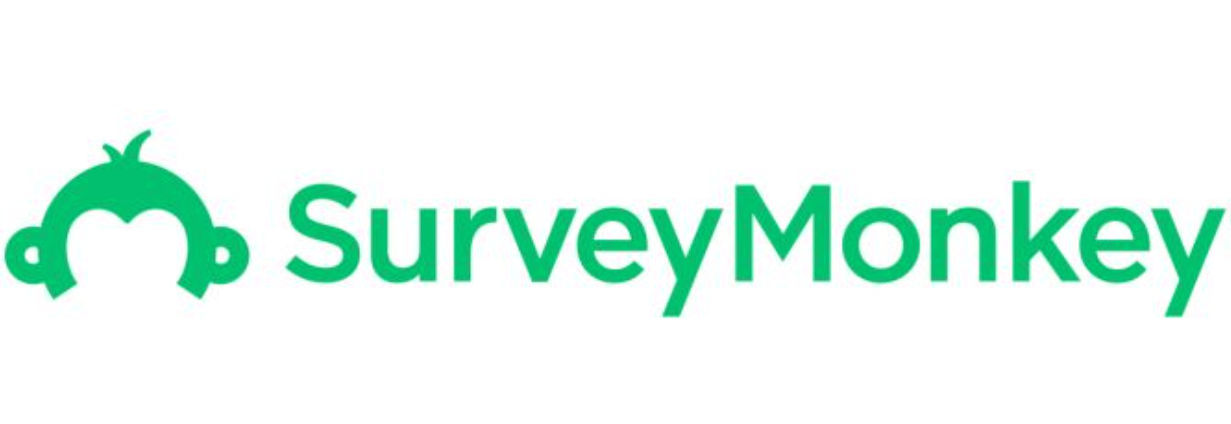
Using Google Forms to create surveys while Drive stores them is an option on the Google Suite. But, for large-scale surveys there are limitations. While it offers basic features like different question types and form logic, it lacks advanced functionality that is often needed for complex surveys.
- Complex branching based on a combination of answers isn’t possible
- Results can be exported over sheet and self-analyzed, but no complex built-in analytics dashboards
- Limited customization options
If you are looking for a more sophisticated tool with additional features for large-scale surveys SurveyMonkey could be the option. Its advanced features like complex analytics, A/B testing, and branching logic, makes it ideal to conduct detailed surveys and analyze data effectively. And if you want to distribute your surveys globally, SurveyMonkey offers translations in 55 languages for all survey fields.
Priced $75/user/ month.
Alternative solutions: Alchemer (formerly SurveyGizmo), Typeform, Zoho Survey
NetDocument for legal documents

If you are a legal firm, your challenges are very similar to creative agencies, but with legal documents. On the surface, Google Drive might seem like a cost-effective option for storage and collaboration, but it falls short in efficiency for legal purposes. Unlike specialized legal document management systems, Google Drive lacks the tailored structure needed for organizing legal files seamlessly. This can lead to manual efforts in setting up matter-centric folders and maintaining consistent file structures across the firm.
Moreover, legal documents often contain sensitive client information and must adhere to strict compliance standards. Google Drive may not offer the robust security and compliance features required by the legal industry.
For legal document management, NetDocuments is a viable alternative to Google Drive. Users seem to love the user-friendliness, the quick search-ability, and the customer support of this solution.
Although their pricing details are unavailable, their team is available for a free consultation to help you determine which product from their solution suite best fits your needs.
Now, that we’ve introduced you to different Google Drive alternatives for various business use-cases, we trust you will make the best decision.
But if you're specifically dealing with visual content, consider a Digital Asset Management (DAM) solution. We've evaluated the top 9 DAM tools in the market to help you find the perfect fit. Take a look for detailed insights.
2000+ businesses across 80+ countries use ImageKit as their solution to store, manage and deliver media assets.
Sign up here and try ImageKit today.




